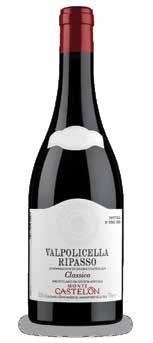ORDER JUN 4 - JUL 8, 2024 ITALY & GERMANY






ORDER JUN 4 - JUL 8, 2024 ITALY & GERMANY





Corvina, Rondinella, Sangiovese, Negroamaro... The list goes on. Italian native grape varieties add up to a quarter of all the varieties in the world. The climate and terroir of Italy make it the perfect place to grow grapes and make wine. No wonder Italian wines are a favourite around the world and with you.
CANADIAN CORNER ....................................................................P4
COUPS DE COEUR ......................................................................... P7
GERMANY P10
Gerd Stepp P11
PUGLIA P16
I Pàstini P17
CELLAR UP! P19
Paolo Leo P20
The Wine People P22
Le Vigne di Sammarco P23
EVERYDAY WINES P24
VENETO P28
Monte Castellon P29
Azienda Agricola I Scriani di Cottini Stefano P32
Giovanna Tantini P34
LE MARCHE P36
Casal Farneto P36
PROSECCO P38
Zucchetto P40
FRIULI-VENEZIA GIULIA P42
Cà di Rajo P43
LOMBARDY-VALTELLINA P45
Plozza P45
COLLECTOR’S CORNER P46
In the following pages, you will find an embarrassment of riches. Spectacular wines are chosen for you by your Masters of Wine to tickle your palate and expand your wine knowledge and experience. These wines, like the Sammarco Primitivo Salento on page xx, have begun to give French wines a run for their money in popularity. Prosecco is the fastest-growing category in the sparkling world, and you order the remarkable '84 Prosecco Superiore DOCG (page 39) to understand why.
Germany is no slouch when it comes to winemaking either. Opimian favourite Gerd Stepp brought his worldwide winemaking experience and mastery home to Bad Durkheim in Germany. His Pinot Noirs and Rieslings - among other varieties - are second to none. In fact, we're sipping on one of his while we're writing this editorial. Inspirational!
We also wanted to let you know about changes to the Subscription Programs. White Wine Select has been so successful that we are moving it from a three-pack to a six-pack. Whether you're a white wine lover or not, this program helps you round out your cellar and your drinking occasions. Also, The Masters Case (TMC) has just gotten more exclusive. Due to availability constraints, TMC wines will only be available to subscribers, not in the Cellar. Just one more reason to join this mixed-case program.
One of the most successful ways we've been able to grow the Club is through the Refer-A-Friend program. You may have noticed the information on the back cover of the Cellar. It's such a great way to introduce your friends, family and colleagues to the Club. Just have them sign up and you'll both receive a complimentary case of wine. It's that easy.
Ciao!
Michael & Greg


Toronto-based Igor Ryjenkov MW was the first in Canada to earn the prestigious Master of Wine credential in 2003. His wine business expertise has been informed by 24 year in the Ontario trade, first in retail, then in key buying positions, and lastly, in projects, most notably, developing the new 5-dot wine style matrix. Igor is one of Opimian’s Masters of Wines.
1. SELECT YOUR WINES
Let yourself be inspired by Opimian’s Masters of Wine. Our custom chart features a list of symbols to help guide your selection. Still unsure which wines to order? Contact us!
2. PLACE YOUR ORDER
There are three ways to order. The last day to order for each Cellar Offering can be found listed on the cover. No orders will be processed after this time.
The wines featured on this Cellar Offering are still at the producers’ wineries when you order them, so it is normal that the process takes a bit of time and effort on our side.
Release dates are dependent upon actual arrival dates, distance from port of entry to liquor board and processing time required by each liquor board.
Once the wine arrives at your local liquor store or distribution centre, you will receive a Pick-up Notice with the specified date (the Release Date) and your pick-up location.

Jacky Blisson MW is an independent wine educator, writer, and consultant with over two decades of experience in all facets of the global wine trade. She is the first Master of Wine in Québec and one of only ten across Canada.
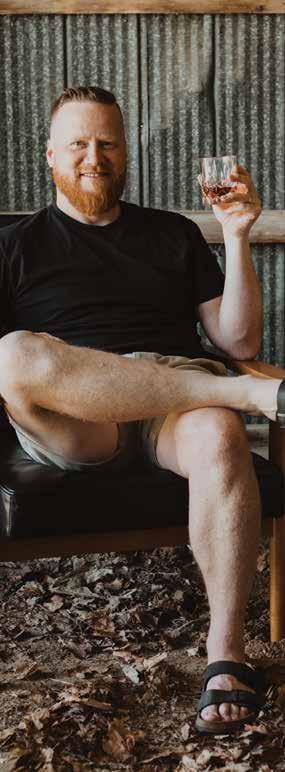

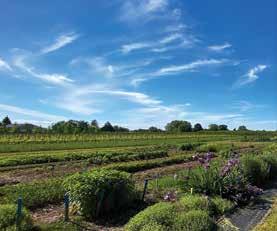

Chardonnay
Franc
CLOUDSLEY CELLARS HOMESTEAD VINEYARD PINOT NOIR, VQA TWENTY MILE BENCH, 2019
Pinot Noir


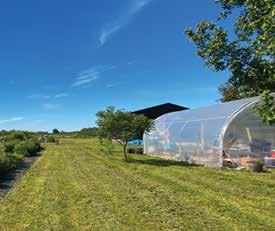
4557 MELDVILLE PINOT NOIR, VQA NIAGARA PENINSULA, 2021
4863
LIGHTFOOT & WOLFVILLE TERROIR SERIES RIESLING, WOLFVILLE, 2022
Riesling
$ 35 $ 210 $ 30 $ 180

Lightfoot & Wolfville are among a select group of Nova Scotia vintners demonstrating the fantastic potential of their province’s wines. This 2022 vintage Riesling from the Terroir Series is a great example. Racy and sleek, this light-bodied, dry white wine offers hugely vibrant green fruit flavours underscored by herbal and mineral notes. 2024-2029– jb

Fermented with ambient yeasts, raised in neutral oak and minimally filtered, it shows a typical medium ruby color. On the nose, it opens with medium-plus intensity aromas of Bing and sour cherries and raspberry with a touch of evergreens and beetroot. It displays a mid-framed structure – extract and body, with a lifted acidity. It is dry with fine supple tannins’ support and a nice length and fruit intensity with cherry, fresh moss and raspberry, and a medium finish. 2024-2026– ir
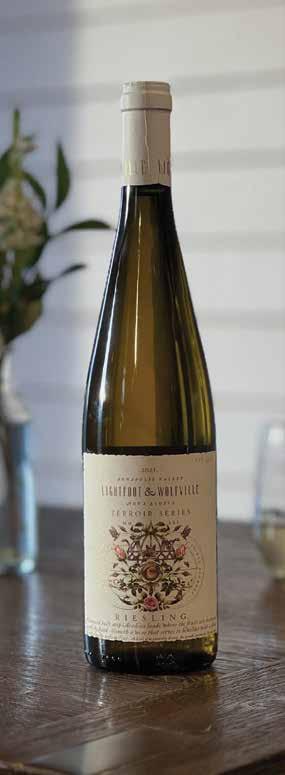
MASTERPIECE

The Veneto is Italy’s winemaking powerhouse, responsible for roughly a quarter of the country’s total wine production. In the countryside surrounding Verona and stretching to that north of Venice, lie verdant vineyards as far as the eye can see.
The vast Veneto region, in the northeast of Italy, boasts a wide range of mesoclimates, topographies, and soil types across its seven provinces. This diversity allows a multitude of indigenous grapes and international varieties to thrive here, making every wine style imaginable.
The Historic Valleys of Valpolicella
The vineyards of Valpolicella are located in the province of Verona. This is red wine territory. Local grapes, Corvina, Corvinone, Rondinella, and Molinara are planted on the marly limestone slopes of a series of hills and valleys. The “Classico” region, the most historic and prized vineyard area, spans Valpolicella’s three major valleys, Fumane, Marano, and Negrar.
Valpolicella’s native grapes are blended to produce a series of red wines ranging from easy drinking to powerful and opulent. The first tier of wines, Valpolicella DOC, is made from newly harvested grapes, vinified to produce medium-bodied reds with attractive tart cherry, peony, and spiced notes.
Valpolicella’s other wines are made, in part, or wholly, from grapes dried after harvest to concentrate their flavours and sugar levels – a technique called appassimento . The famous Amarone della Valpolicella DOCG is produced entirely from these raisined grapes, fermented dry, and aged for long periods in oak, yielding rich, weighty red wines with immense ageability. A sweet wine iteration, the most ancient of Valpolicella’s wines, Recioto della Valpolicella DOCG, is also not to be missed.
Finally, a hybrid wine style, made from just harvested grapes that undergo a second fermentation on the leftover grape pomace of dried Amarone grapes, also exists. These, Valpolicella Ripasso DOC wines are a great mid-way, dry style between the vibrant Valpolicella and heady Amarone.
The Volcanic Terroir of Soave
Directly to the east of Valpolicella, red wine gives way to white in the hilly growing region of Soave. The famed
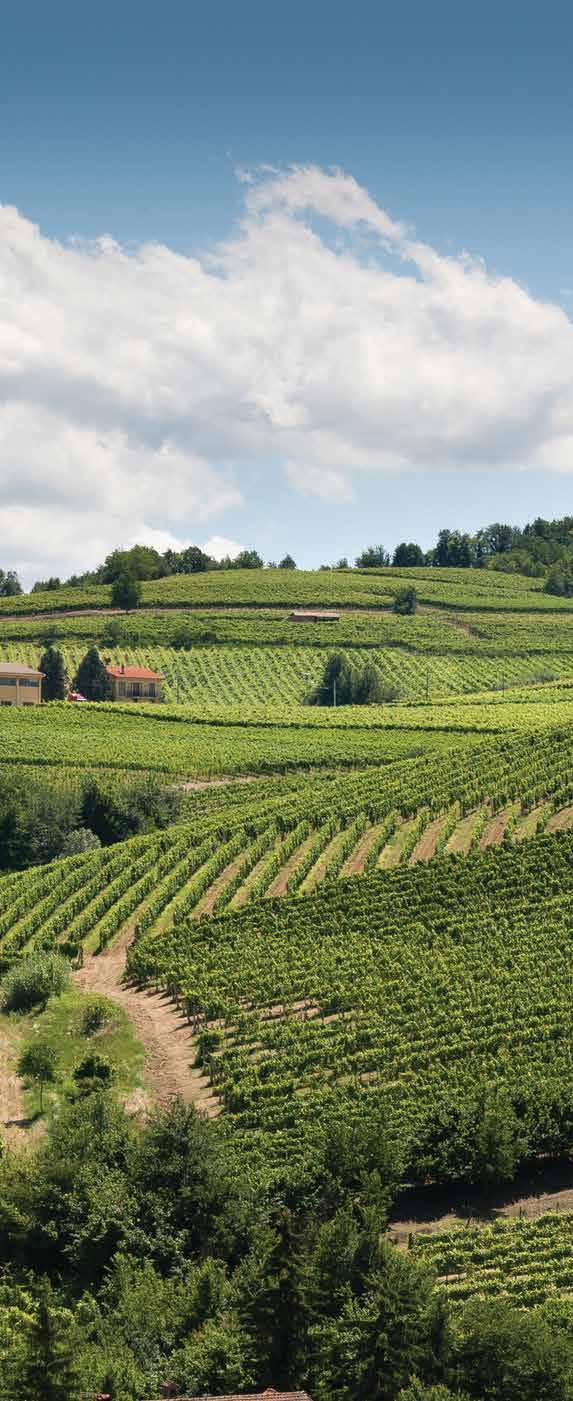
volcanic soils here are home to the indigenous Garganega grape variety, which must make up at least 70% of its dry white wines.
Much like Valpolicella, and many of Italy’s other wine regions, the historic growing area is referred to as “Classico” and possesses many of Soave’s most reputed vineyards. Basic Soave DOC white wines are dry, crisp, and light in body, with orchard fruit, citrus, and almond notes. The top, Soave Superiore DOCG wines have more complex, nuanced flavours, and a firmer structure, with the occasionally oaked cuvée cropping up.
Soave also has its traditional sweet wine production from dried grapes, the Recioto di Soave DOCG. These luscious dessert white wines are known for their crystalline fruit flavours, bracing acidity, and honeyed sweetness.
The Prolific Heartland of Prosecco
Italy’s most famous sparkling wine is undoubtedly, Prosecco. The production zone for Prosecco DOC spans the Veneto and Friuli Venezia Giulia. However, the best terroir for Prosecco, home to the Prosecco Superiore DOCG vineyards, is found in the Veneto’s Treviso province.
Two hillside areas here, Asolo and Conegliano Valdobbiadene, boast optimal sunny, temperate conditions and a mix of glacial, alluvial, and morainic clay-limestone soils where lower yields of the Prosecco grape variety, Glera, produce complex, elegant sparkling wines.
The distinctive production method for Prosecco, whereby effervescence is generated in tank, rather than bottle, gives Prosecco its signature fresh, fruity, easydrinking charm. For a twist on classic Prosecco, try Prosecco Rosé wines, made from Glera blended with Pinot Noir.
Other Gems from the Veneto
A tour of Veneto wine regions would not be complete without mentioning the vineyards around Lake Garda, below the alpine foothills. Breezes from the lake and cool mountain air combine to moderate the climate, giving a long, sunny, moderate growing season.
The vineyards of Bardolino, on Lake Garda’s eastern shore are planted to the same array of grapes as Valpolicella. The cooler climate here gives a slightly lighter, tangier, and earthy style to its reds. Overlapping Bardolino to the south, the Custoza growing area produces crisp, dry white wines from indigenous varieties, Cortese, Fruilano, Garganega, and Trebbiano Toscano.
From affordable, every day sipping wines produced across its territory, like Pinot Grigio delle Venezie DOC whites or Rosso Veronese IGT reds, to its most reputed terroirs, the Veneto truly has something for every wine lover.
THIS CELLAR'S HIGHEST SCORING WINES BY OUR MASTERS OF WINE


STEPP RIESLING, PFALZ, 2023, LOT 4992, P12


RIPASSO CLASSICO SUPERIORE DOC, MONTE CASTELON, 2020, LOT 5004, P29

 MACRAMÈ PRIMITIVO, PUGLIA IGP, I PÀSTINI, 2022, LOT 5001, P17
TAJAPIERA AMARONE DELLA VALPOLICELLA CLASSICO DOCG, 2019, LOT 5015, P23
VALPOLICELLA
MACRAMÈ PRIMITIVO, PUGLIA IGP, I PÀSTINI, 2022, LOT 5001, P17
TAJAPIERA AMARONE DELLA VALPOLICELLA CLASSICO DOCG, 2019, LOT 5015, P23
VALPOLICELLA
Kelli joined the Opimian team to combine her passion for customer service and her love of wine into one place. Since joining Opimian, Kelli has started to build lasting relationships with our members and is helping to ensure we provide a high level of customer service day in and day out! She can often be found with a glass of sparkling wine or champagne in her hand!
DRINKING NOW > Bulles
d'O AOP Blanquette de Limoux Tête de Cuvée, 2019, LOT 3554

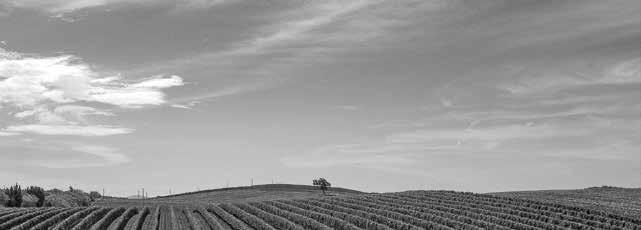
We are always looking for ways to make your Opimian Membership more valuable than having exclusive access to world-class, magnificent wines.

The Independent Wine Education Guild (IWEG)
IWEG is offering a special rate for Opimian members for Wine and Spirit Education Trust (WSET) and Wine Scholar Guild (WSG) courses!
To see the full list of courses offered, please visit https://iweg.org and use the code opimian24 at checkout to receive 10 per cent off eligible courses! For further information please contact atheunissen@iweg.org

We have partnered with the pioneering company ReCork to recycle our corks from our cellar tastings, events, and dinners – if you would like to do the same learn more by visiting their website. www.recork.com
Producer and Cellar Tastings
Coming to a City Near You in 2024!
These events are a chance to taste last year’s vintage of a range of wines in the current cellar.
Each tasting will focus on several producers and may include special guests! Keep an eye on your emails and Cellar newsletters for updates.
June 2024
Cellar Tasting in Toronto
August 2024
Canet Event

Ask a lot of questions and taste widely. Don’t be afraid to pester wine retailer staff, sommeliers, and anyone else in the know. Also, don’t let other people’s opinions sway you or intimidate you. The beautiful thing about wine is that there is a style for every palate.

Scan to visit our Eventbrite page!


EASY to order EXPERTLY curated EFFORTLESSLY enjoyable

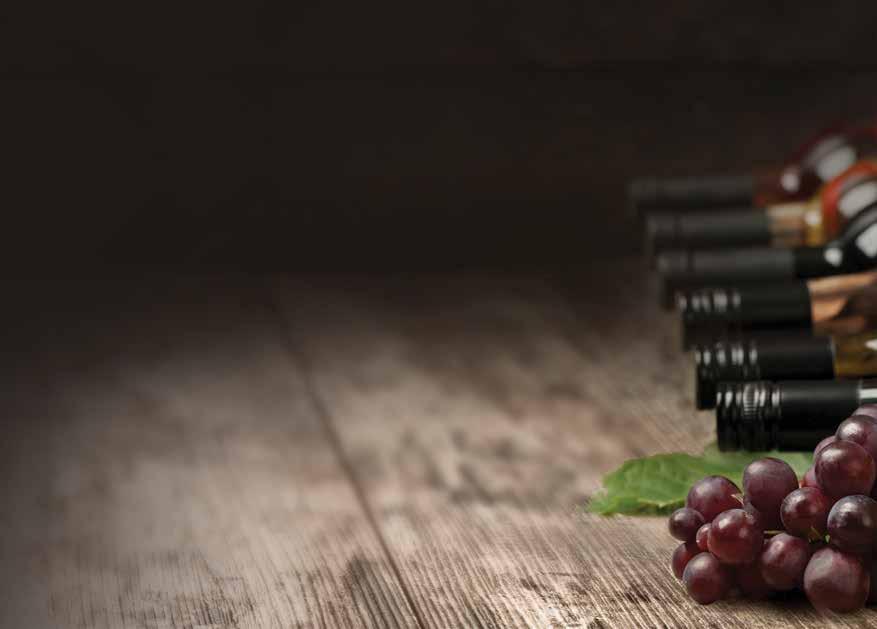
OVERWHELMED BY CHOOSING WINES IN THE CELLAR?
SUBSCRIBE TO THE MASTERS CASE, A MIXED, SIX-BOTTLE CASE
The Masters Case wines from this Cellar embody the essence of Pfalz winemaking and are a testament to Germany’s esteemed reputation in the world of wine. Known for its rich history and meticulous vineyard practices, Pfalz produces wines of exceptional quality and character. The reds and whites crafted in this region reflect the unique terroir, showcasing the perfect balance of flavour and elegance.
SIGN UP NOW
CURATED BY OPIMIAN’S OWN MASTERS OF WINE FOR MEMBERS LIKE YOU.



Like many European wine strongholds, winemaking in Germany dates back to Roman Antiquity, and flourished under the control of monastic orders in the Middle Ages. While sweet white wines have long been the country’s best-known export, this has all changed in recent years. Germany is increasingly focused on drier whites, from star grape Riesling, and a wealth of other aromatic white varieties. Increasingly exciting dry reds and sparkling wines are also generating a lot of buzz. Wine production is primarily concentrated in southwestern Germany. Here, cool to temperate, sunny conditions make for incredibly vibrant, pure, refreshing wines that pair easily with food.
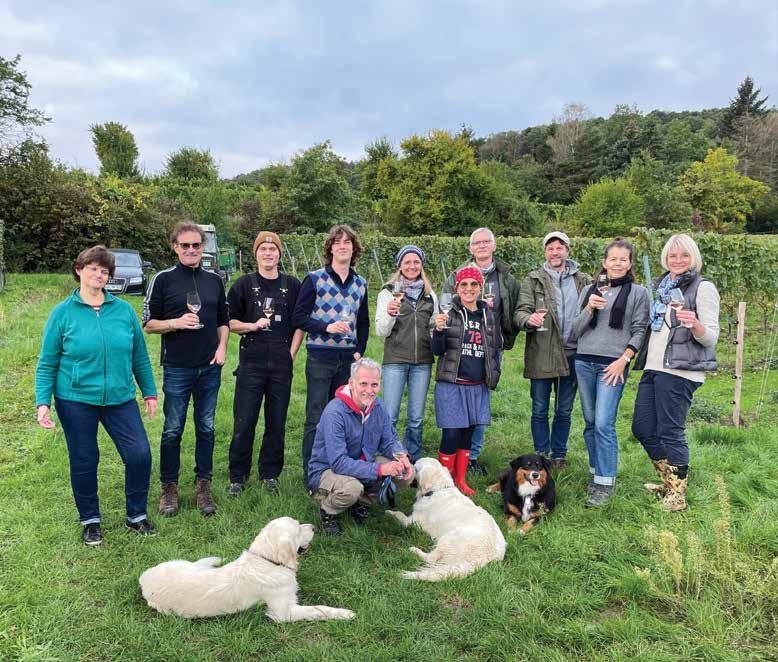
4993
STEPP RIESLING SINGLE CRU CASE: 2 BOTTLES EACH A PERFECT PAIRING FOR BOTH YOUR TABLE AND CELLAR
$ 25 $ 150
The Pfalz is among the sunniest and driest wine regions in Germany. This gives concentrated, flavourful whites and red wines in a fuller-bodied, rounder style than in areas like the Mosel or Rheingau. Gerd Stepp is a Pfalz-native from a multi-generation wine-producing family. His compelling, terroir-focused wines, from across the region, and a collaborative project in Argentina, are not to be missed.
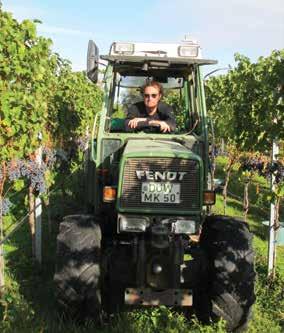
STEPP RIESLING VOM SAUMAGEN (KALLSTADT), PFALZ, SINGLE CRU, 2023
Riesling

This sunny, south-facing plot of the Kallstadter Saumagen vineyard has limestone and deeper loam soils giving nerve but also weight to this cru. Pretty spring floral notes mingle with apple, riper stone fruits, hints of spice, and earthy undertones on the nose. Steely acidity and an initially taut palate give way to layers of complex, nuanced flavours. An ageworthy dry Riesling to cellar or decant if you can’t wait. One of my personal favourites from the cellar. 2024-2037–jb
STEPP RIESLING VOM KÖNIGSWINGERT (WACHENHEIM), PFALZ, SINGLE CRU, 2023
Riesling

The Königswingert vineyard has a very different soil profile from Kallstadter Saumagen. Here the slopes are stony, alluvial deposits rich in sandstone. This cuvée is always discreet in its youth, with a very precise, focused palate profile. Tart, tangy fruit gives a lot of lift to the mineral, earthy expression on the nose and the palate. This medium weight white wines finishes dry, with a lingering salinity that is hugely refreshing. 2024-2035 –jb
STEPP RIESLING AM GOLDBERG (HERXHEIM), PFALZ, SINGLE CRU, ORGANIC, 2023
Riesling

The Goldenberg cru is perched at 200 metres altitude on a southeast facing slope. This ideal exposure to the morning sun, coupled with limestone-rich soils gives racy, structured wines. The 2023 vintage has attractive aromas of white blossoms, ripe citrus, and orchard fruit, with earthy undertones. The palate is crisp, broad, and dry with notable depth and persistence. 2024-2037–jb


4992 STEPP RIESLING, PFALZ, 2023
A light-bodied, dry Riesling with high, racy acidity and quite a sleek, silky palate. Pleasant aromas of gingerbread spices, baked apples, and just ripe stone fruit entice on the nose. The flavours are tarter and tangier, giving a really lively, lip-smacking mouthfeel. A dangerously thirst-quenching white wine for the aperitif or light starters. 2024-2029 –jb
Allspice, baked apple, apricot, wet stone
Lemon, green apple, subtle hints of nutmeg [< 4g/L]
4994 STEPP SAUVIGNON BLANC, PFALZ, 2023
Blanc
As a lively apéritif 12.5%
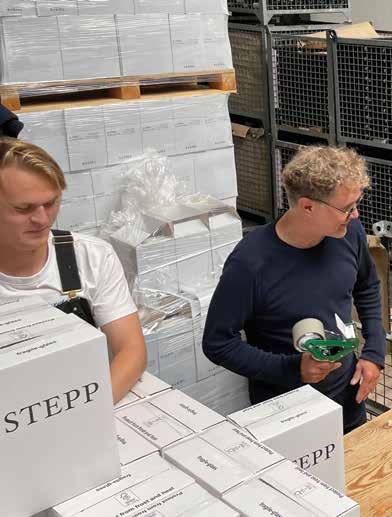
Gerd Stepp’s 2023 Sauvignon Blanc really comes alive on the palate. The nose offers herbaceous, earthy aromas typical of the grape. While this bouquet of cut grass, wild herbs, and mineral undertones is appealing, it is the juicy green fruit flavours on the palate that make really make this crisp, refreshing wine sing. 2024-2028 –jb
Grassy, green bean, lime, wet stone
Apple, gooseberry, lemon, fresh green herbs [< 4g/L]
salmon steaks with chive butter
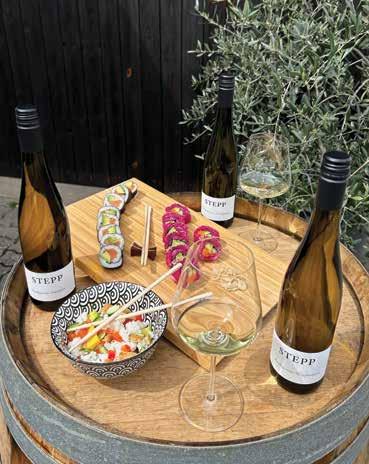


4995 STEPP GEWÜRZTRAMINER, PFALZ, 2023
Gewürztraminer
Fans of Gewürztraminer’s heady aromas and rounded mouthfeel will not be disappointed. The 2023 vintage from Stepp is redolent with the perfume of ripe yellow fruit, spice, and flowers in bloom. The palate is very plush and broad, with no lack of freshness or drive. Finishes dry and subtly spiced. Drinking well now. 2024-2027–jb

4997
STEPP PINOT BLANC / PINOT GRIS CASE: 3 BOTTLES EACH
$ 19 $ 114
The Pinot family of grapes are important cultivars in the Pfalz region. Pinot Blanc, also known as Weißburgunder, is prized for its delicacy and laser-like palate precision. Pinot Gris, or Grauburgunder, is weightier, and fuller flavoured. Gerd Stepp really nails the individual traits of each grape.
CHOOSE SOME OR ALL OF THESE PINOT COUSINS



The 2023 vintage is still very discreet at this early stage. Whispers of green fruit, peppery spice, and mineral aromas emerge with aeration. The palate is crisp, taut, and bone dry with a nice balance of tangy fruit and earthy undertones. A subtle, understated wine that needs time in the glass to come into its own. 2024-2027–jb
The Pinot Gris grape is so named for its slightly greyish, purply hue upon ripening. With skin contact, Pinot Gris wines often display a subtle hint of pink, as well as more potent flavours – a defining characteristic of this attractive wine. Brimming with apple, spice, mineral notes, this medium weight wine finishes with lots of freshness and subtle tannic grip. 2024-2028 –jb
4998
STEPP PINOT NOIR CASE: 2 BOTTLES EACH
Much like Gerd Stepp’s trio of single vineyard Rieslings, this Pinot Noir mixed case allows wine lovers to compare individual site expressions from the winery’s best cru plantings. Great Pfalz Pinot Noirs ally power with finesse. These are superb examples.
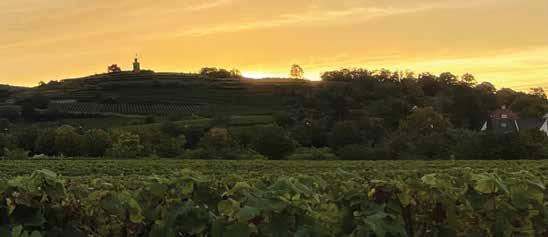
STEPP PINOT NOIR STEINBERG (HERXHEIM), PFALZ, SINGLE CRU, 2022
The Steinberg vineyard is south-east facing with sandstone subsoils. This site tends to produce Pinot Noir in a firm, structured style which is definitely the case in 2022. Appealing red and dark fruit aromas mingle with exotic spice, tea leaf, and floral nuances. The palate is juicy and textural, with brisk acidity and taut tannins. Needs a couple of years cellaring to reveal its full potential. 2025-2032–jb
Initially marked by oak-derived aromas of cedar and pencil shavings, the Sandstein Reserve cuvée develops pretty red fruit and fragrant florality with aeration. The palate is fresh and moderately firm with a similar duality of vibrant fruit and savoury spice. All the making of a graceful Pinot when the tannins and oak imprint have mellowed. 2025-2032–jb



PINOT NOIR RÉSERVE HERXHEIM AM BERG, PFALZ, SINGLE CRU, 2022
The stony, limestone-clay soils around Herxheim give a lot of tension and minerality to the Pinot Noir grown here. This bold 2022 vintage cuvée is still in its infancy. A profusion of ripe red and black berries mingles with fragrant spices and forest floor undertones on the nose. The palate is tightly wound, with firm tannins, and tangy red fruit, cocoa, and mocha flavours. 2026-2033 –jb
In the very south-east of Italy, including the “stiletto” of the boot, the region boasts a wine history dating to before Phoenicians (XV-XXcc BC), a large production – third in plantings and second by volume in the country, and a range of local, characterful native grapes, most famously Primitivo and Negroamaro. However, for the most of the recent history its warm climate and the relative ease of viticulture assigned it to making cheap, jammy wines or those meant for blending elsewhere. Thankfully, the quality drive spurred by the formation of EU and changing marketplace preferences is now measured in decades. The quality today has never been better and continues to improve, and the region’s blessings in regards to climate and viticulture continue to ensure that this is where great values are found.


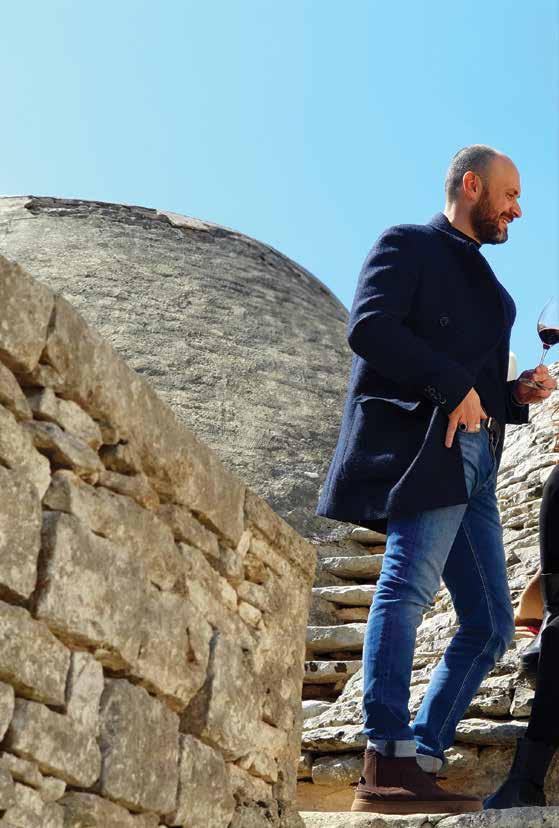

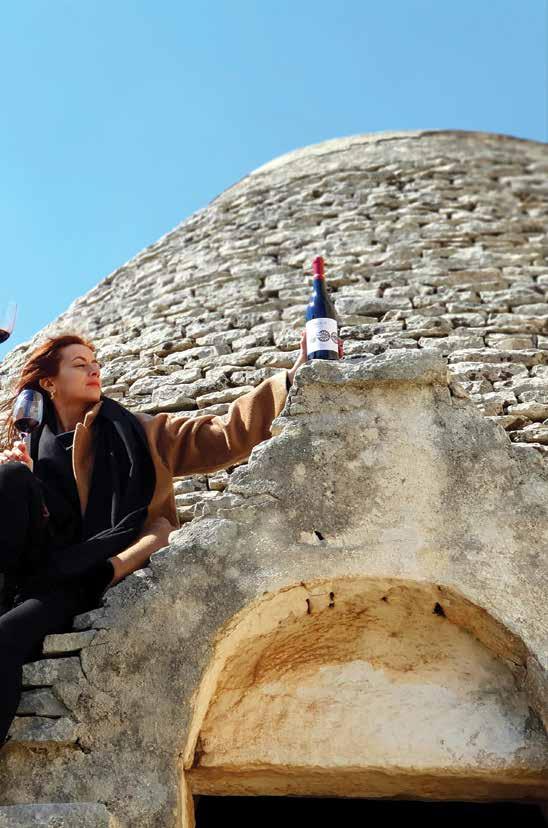

I Pàstini winery, named after a Latin for “hoe”, an indispensable implement in a vineyard in days past, is a family affair. The Carparelli family founded the winery in 1996, in Valle d’Itria area of the region, roughly equidistant from the towns of Bari and Brindisi. On their 18 ha they not only aim to capture the local expression of the familiar regional grapes, like Primitivo, but also focus on finding and rehabilitating rarer and at-risk ones, like Verdecca and Susumaniello. 14%
Primitivo
$ 25 $ 150
With a deep purple, opaque robe, the wine offers medium-intensity aromas of rye bread crust, malt, cream, vanilla, burnt sugar, plum, prune and dried fig. The palate is dry, with a low but adequate acidity, a medium extract, medium-plus fine powdery-textured tannins and a mediumplus body. It has nice length and persistence of rye bread crust, dried plum, coffee wafers, milk chocolate, prune and burnt sugar flavors and a medium-plus finish. Acts as if it saw some oak, but apparently it did not. 2024-2028 – ir
bread crust, dried plum, coffee wafers, milk chocolate, prune and burnt sugar
Canestrato Pugliese sheep's milk cheese
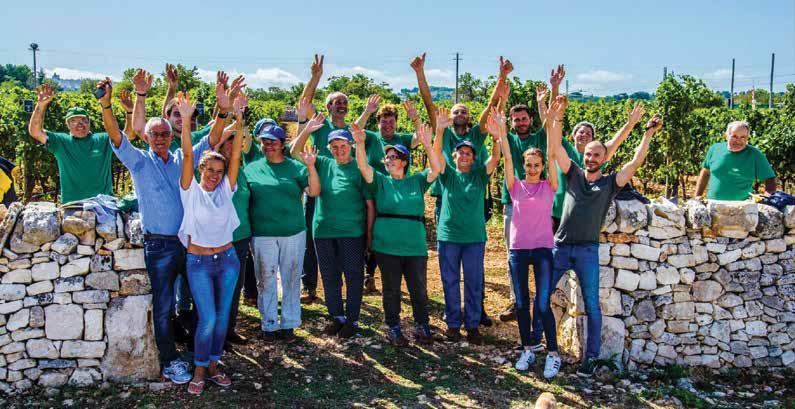
Primitivo

It is deep purple and opaque in the glass. The nose has a medium intensity with elements of coffee wafers, prune spread, cream, oily/black olive richness, and a pickling note. It is dry on the palate and shows a low adequate acidity, a medium extract, medium fine-textured tannins, a medium body and lovely length and fruit with creamy, prune, coffee wafers, wood spice - nutmeg?, a pickling note and chocolate liquor components, wrapping with a medium-plus finish. It has nice polish and presence for a ripe wine. 2024-2026 – ir
A native, rarely seen, yet promising variety. It opens with a deep purple, opaque color and a medium-intensity aromatic set of cola, hickory smoke, lard/bone marrow, savory richness, leather and prune spread, with a floral lift. The dry-ish palate follows with a low adequate acidity, a medium extract, medium-plus fine-textured tannins and a medium-plus body, all wrapped into a nice length and well-pronounced flavors of hickory smoke, tar, cola, lard/bone marrow and prune spread, closing with a mediumplus finish with smoky, Coffee Crisp note. Not everyone’s cup of tea, but will definitely appeal to some. 2024-2026 – ir

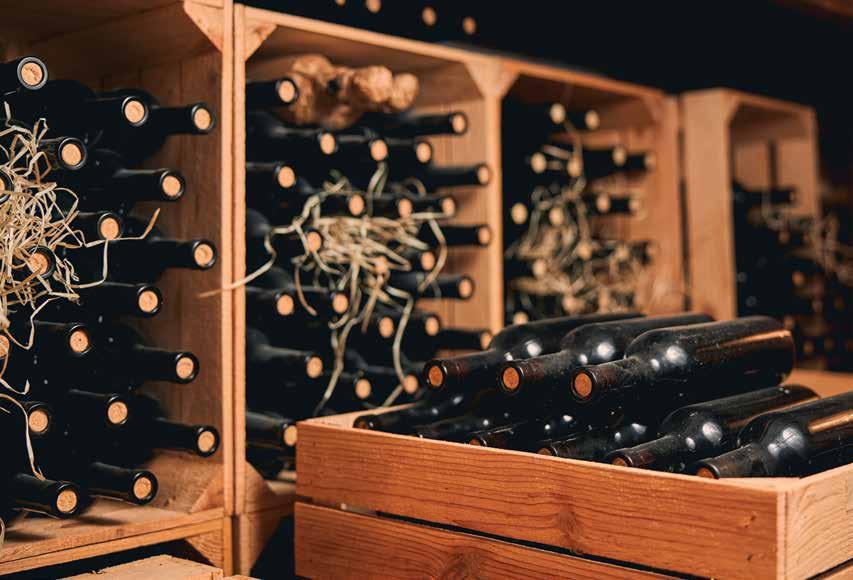
Cultivate your curiosity while building a balanced cellar.
Cellar Up! has been designed to offer you the full Opimian experience. A mix of classics and must-haves, sprinkled with new products and unique tasting experiences.

The prestigious DOCG designation was granted to this area in 2009. It is a testament to the quality and consistency of the wine. This is a fabulous example.

The Germans are known for doing things well. Making Riesling is no exception. Gerd Stepp made wine around the world so he could learn how to make the very best at home. He succeeded! STEPP RIESLING, PFALZ, 2023, LOT 4992, P12
SALENTINO DOP, 2023, LOT 5036, P26

The wonderful thing about lesser-known regions like Puglia is that you can find great wines that are of remarkable value. This charmer belongs in every cellar.
PRIMITIVO, PUGLIA IGP, I PÀSTINI 2022, LOT 5001, P17

This one was an Opimian Featured Wine not too long ago. It deserved the attention and has become a Member favourite. It's a marvelous, foodfriendly wine for your next Italian meal.
$ 882

If you've tasted Amarone, you know why it's iconic. If you haven't, you need to find out. Be sure to check out Michael Palij, MW's tasting notes, and article on this winemaker on Page 31. This is a wine worth waiting for!
Cantine Paolo Leo is a family business, rooted in five generations of grape growers in this corner of Puglia. The first wines were made by Nicola, the father of the winery’s founder Paolo, in early 1900s, but the first bottlings under the winery name appeared only as recently as 1999. Paolo’s son, also Nicola, is now in charge of winemaking from 70 ha focusing on capturing the best that traditions have to offer interpreted through a modern lens.

5016 PIANEROSSE VERDECA, PUGLIA IGP, 2023

Verdeca
A pale platinum yellow appearance here. The nose is of medium-intensity with notes of honey, wild flowers, pencil lead and dried pear compote. Dry, the palate shows a medium-minus but adequate acidity, a medium extract, a soft texture, a medium body, and nice length and fruit with flavors of honey, pith/grapefruit peel, wild flowers and graphite leading to a medium finish. 2024-2025 – ir

5017
TRIADE BIANCO DELLA CAMPANIA, FIANO, FALANGHINA, GRECO, CAMPANIA IGP, 2022
Fiano, Falanghina, Greco di Tufo
Equal parts of the three grapes with a fifth of each fermented and rested in oak. A light lemon yellow hue. The nose has mediumplus intensity aromas of yellow fruit, dried pear/yellow plum, notes of golden raisins and baked cinnamon apple. The palate is dry, with a medium acidity, a medium extract, a soft texture and a medium body. It shows medium-plus length and fruit intensity of drying yellow pear and plum, baked apple and golden raisins, and a medium finish. 2024-2025 – ir
alfredo

5018
A third each, with around half spending 12 months in second- and third-fill oak. A deep purple, opaque appearance. The nose offers medium-intensity aromas of dried flowers, blue- and blackberry, cream, toffee and chocolate. Dry, with a medium-minus acidity, the palate has a medium-plus frame: extract, fine powdery-textured tannins and body, with lovely length and persistence of prune, dried berries, creamy, toffee and chocolate flavors, and a medium finish. 2024-2026 – ir
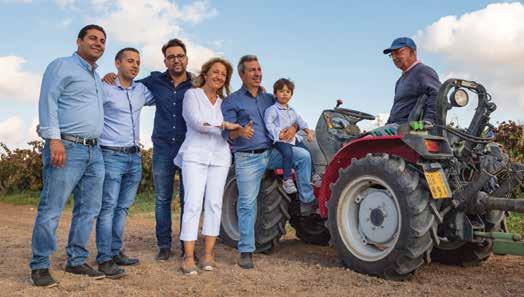
5020
Primitivo

40% of this blend spent six months in second-fill oak. The wine shows a deep purple, opaque robe and medium-intensity aromas of dried red fruit, cream, blueberry tart and mint. The palate is dry and has a medium-minus adequate acidity, a medium extract, medium fine-textured tannins and a medium, plush and cushy, body. It shows a nice length and medium-plus intensity flavors of plum, blueberry tart, sandalwood and mint, closing with medium-plus finish. 2024-2026 – ir

45 year old vines. At full ripeness, bunch stems were twisted, allowing the grapes to dry on the vine for 12 days losing 25-30% of water. The wine has a deep purple, opaque color and mediumintensity aromas of black raisins, dried prune, dried blueberry pie and cream. The palate is dry, with a low adequate acidity, a mediumplus extract, medium-plus fine medium-textured tannins and a medium-plus body, and has nice length and flavors of dried prune, dried blueberry pie, cream, black raisins and dark plum chocolate trailing off with a medium finish. 2024-2026 –jb
Pecorino di

5021 INDESIO PINOT GRIGIO, DELLE VENEZIE DOC, 2023
Pinot Grigio
A medium, golden yellow appearance. The medium-intensity aromas are those of fleshy yellow plum, pear and cantaloupe. It is dry on the palate, has a medium-minus sufficient acidity, a medium extract, a soft texture, a medium body, and shows attractive length and fruit with lemon, yellow plum and pear elements, and a touch of minerality on a medium finish. 2024-2025 –ir
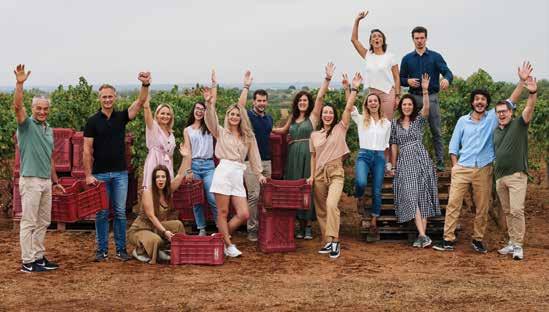
The Wine People, a.k.a. TWP, are a team that wears many hats: an Italian specialist with wineries and teams in five main regions of the country, the logistical solution specialist, Italian wine ambassador and promoter, as well as sustainability and organic approach advocate and practitioner.
5022 CARLOMAGNO PRIMITIVO, PUGLIA IGP, APPASSIMENTO, 2023
5023 COLPASSO PRIMITIVO, PUGLIA IGP, 2023

Grapes were dried on the wine for 12 days by twisting stems, with 25-30% water loss. A deep purple, opaque robe. The nose features medium-intensity aromas of sandalwood, pencil shavings, dried prune, dried blackberry and blueberry. It is dry-ish on the palate with a medium acidity, a medium extract, medium loose-textured tannins and a medium plush body, and nice length and fruit with creamy, custardy, dried prune and blue-/ blackberry, pencil shavings and sandalwood flavors, and a medium-plus finish. A nice rich, creamy, cushy mouthfeel here. 2024-2026–ir

The wine shows a deep purple, opaque tint and medium-intensity aromas of black fruit, black plum, hickory, floor varnish, cream and blackberry preserve. The palate is dry and has a medium acidity, a medium-minus extract, medium finetextured tannins and a medium body with quite straightforward notes of dark fruit, prune, blackberry, hickory and tar, and a medium finish. 2024-2026 – ir
5024 INTEGRO NEGROAMARO, PUGLIA IGP, ORGANIC WINE, 2023
 Negroamaro
Negroamaro
It has deep purple, opaque presence in the glass. The nose shows medium-intensity notes of cream, black plum reduction, flowers and lees - simple but attractive. Dry, with a medium-minus acidity, the palate has a medium extract, medium fine loose-textured tannins, a medium body, nice length and persistence of prune spread, floral and black plum nectar flavors towards a medium finish. 2024-2025 – ir
The wine has a deep purple, opaque appearance and a medium-intensity nose with elements of chives, onion jam, black plum reduction, oil and coffee liquor. Dry, with a medium acidity, the palate is medium-plus sized - extract, fine mediumtextured tannins, body and length with flavors of chocolate, chives, walnuts, roasted carrots and coffee liquor, closing with a medium warm finish. 2024-2028 – ir
with Marcella Hazan's butter-
Le Vigne de Sammarco traces its origins to 1970s, when Franco Rizzello decided to stop supplying the local coop with his grapes and make his own wine. But it was not until 2000, and thanks to the efforts of his son Marco to focus on local grapes a decade earlier, that the winery finally launched its own label. With the next generation in the wings, today the winery farms 120 ha with 80 more to come, with the aim of sharing the best of the Puglian long wine history with the world.

Harvested sur-mature. A deep purple, opaque robe in the glass. The wine shows mediumintensity aromas of bitter chocolate, tar, prune, blackberry tart and a hint of burnt starch. It has a sweet palate with a low but adequate acidity, a medium-plus extract, medium-plus fine-textured tannins, a medium-plus body, and nice length and pleasant simple fruit with notes of prune, blackberry jam, dark chocolate, and a medium finish.
2024-2030 –ir

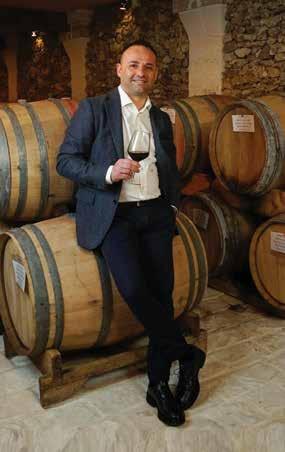
5031
MALVASIA BIANCA AND ROSATO CASE: 6 BOTTLES EACH
This is a nice "patio kit" – a pair of different-sounding but familiar-styled wines: fresh, unoaked, mellow, crowdpleasing and food-friendly. So, chill, open, pour and enjoy. If that sounds a little too easy, you might then consider adding back some intellectual load by serving the wines blind and asking your guests to guess the grapes. But that, of course, is your call.


The wine has a pale platinum yellow color and a medium-intensity note of quince with a hint of gingerbread - simple and pleasant. Dry with a soft, adequate acidity, a medium extract, a medium texture and a medium body, the palate has a lovely length and medium-intensity flavors of apple butter, quince and a hint of ginger or cinnamon on a medium finish. It is an entry-level wine, but quite a crowd-pleasing style. 2024-2025– ir
It shows a very pale gray-pink hue and medium intensity aromas of pencil lead, nutshell lining, pebbles, a hint of hard candy, cranberry and watermelon. The palate is dry, has a medium acidity, a medium-minus extract, a soft texture, a medium-minus body and nice length and intensity with notes of pencil lead, nutshell lining, hard candy, pink grapefruit and watermelon, and a medium finish. 2024-2025– ir
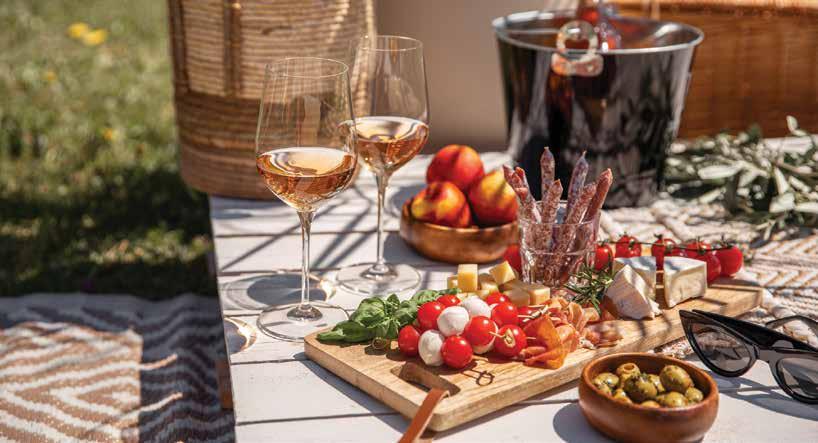
A deep purple, opaque robe in the glass. The medium-intensity aromas are a bit more advanced than the vintage suggests and include pencil lead, chestnut, dried black olive and prune, black soil and notes of grilled lemon. Dry, the palate shows a medium acidity, a medium extract, medium soft-textured tannins, a medium body and lovely length and persistence of toffee, chestnut, dried black olive and prune, pencil lead, ink and black tea flavors fading with a medium finish. 2024-2026– ir


A deep ruby core with garnet hints, a near opaque appearance. The nose shows medium-intensity aromas of cream, coffee wafers and chicory root. Dry, with a medium acidity, a medium-minus extract, medium fine-textured tannins and a shy-of-medium body, the palate has nice length and fruit with plum, coffee wafers, chicory root and blackberry preserve elements, and a medium warm finish. 2024-2026– ir
WINES TO SAVOUR ANY DAY OF THE WEEK
NEGROAMARO, SALENTO IGP, 2023
Negroamaro


The wine has a deep purple, opaque color and a mediumintensity nose with aromas of chestnut, leather, tar, toffee, smoke and prune. It is dry, with a medium acidity, a medium extract, medium fine-textured tannins, a medium body, and better than medium length and intensity of prune, smoke, tar, toffee, leather, chestnut and raw chocolate flavors, closing with a medium finish. 2024-2026– ir
Chestnut, leather, tar, toffee, smoke and prune
Prune, smoke, tar, toffee, leather, chestnut, raw chocolate
Cervellata di Toritto sausage and lentils
5036
SALICE SALENTINO CASE: 3 BOTTLES EACH
An opportunity to compare and contrast the two levels of the Salice Salientino DOP. Both require at least 80% of Negroamaro grape with up to 20% of two red Malvasias – di Brindisi or di Lecce. The Riserva has to be aged for two years with at least one year in wood. See for yourself what the differences are and which version you prefer.


Negroamaro, Malvasia Nera
A deep purple, opaque appearance here. The nose offers medium-intensity notes of dried flowers – marigolds and nasturtiums, sandalwood, blueberry pie and coffee liquor. Dry, the palate shows a low but adequate acidity, a medium extract, medium loosetextured tannins, a medium body and a plush mouthfeel. It has a nice length and intensity with prune, sandalwood, blueberry pie, dried florals, coffee liquor and char making an appearance before a mediumplus finish. 2024-2026 – ir
It spent 9 month in 2nd and 3rd fill barriques. The wine has a deep purple, opaque robe and a medium-intensity aromatic set of cream, coffee liquor, dried blue and black berries, marigolds, vanilla, gingerbread and game, with more red fruit spectrum showing with air. It is near-dry on the palate with a medium-minus acidity, a medium extract, medium fine-textured tannins, a medium body, and lovely length and fruit intensity featuring dried plum, dried black- and blueberries, coffee liquor, dried flowers, gingerbread and Portobello mushroom, and a medium-plus finish. 2024-2026 –ir
Dried flowers – marigolds and nasturtiums,
Cream, coffee liquor, dried blue and black berries, marigolds, vanilla, gingerbread, game, red fruit
Dried plum, dried black- and blueberries, coffee liquor, dried flowers, gingerbread, Portobello mushroom


Negroamaro
Aged for 6 months in Allier forest barrique. A deep purple, opaque appearance. The nose offers medium-intensity aromas of char/hickory, singed wool/peat/earth, dried prune and black raisins. The palate is near-dry and has a medium-minus acidity, a medium extract, medium-plus powderytextured tannins, a medium-plus body, and a nice length and medium-plus-intensity flavors of prune, raw chocolate, singled wool/roast beef, wild honey and black raisins fading into a medium-plus finish. 2024-2026 – ir
SALICALE RISERVA ROSSO, SALICE SALENTINO DOP, 2020
Negroamaro, Malvasia Nera
This wine had its malo conversion in Allier barriques, followed by 12 months of oak ageing. It shows a deep purple, opaque color in the glass and medium-intensity elements of chestnut, leather, cedar, mint, blackberry preserve, blueberry tart, coffee essence and game/lees. Dry with a low adequate acidity, the palate offers a medium-plus extract, medium-plus fine-textured tannins and a medium body, with a cushy, plump mouthfeel. It has lovely length and persistence of creamy, coffee essence, tar, blueberry tart, walnut and leather flavors, closing with medium-plus to long finish. 2024-2028 –ir
14.5%
Char/hickory, singed wool/peat/earth, dried prune and black raisins
Prune, raw chocolate, singled wool/roast beef, wild honey, black raisins
Orecchiette with Bari-style beef ragù


5037
Chestnut, leather, cedar, mint, blackberry preserve, blueberry tart, coffee essence, game/lees
Creamy, coffee essence, tar, blueberry tart, walnut, leather
Puglian baked lemon-marinated lamb and potatoes
LE VIGNE DI SAMMARCO VERVE NEGROAMARO AND SALICALE RISERVA ROSSO CASE: 3 BOTTLES EACH
This case offers a chance to do a quality or, rather, a provenance comparison –IGP vs DOP. The former comes from a larger, less specific area but has fewer constrains to follow. The latter comes only from the strictly defined zone deemed to be of high enough quality to earn a DOP designation, but has to follow its mandates. See how they stack up in head-to-head taste-off. $ 23 $ 138
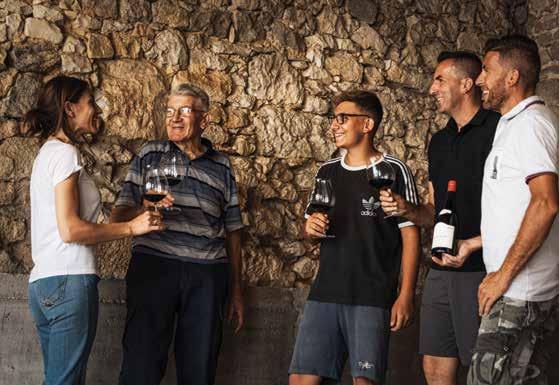
The Veneto is one of Italy’s powerhouse wine producing regions. Stretching from the Dolomite Mountains to the Adriatic Sea, the hilly terrain and flat lands of the Veneto are home to Prosecco, Valpolicella, and Soave, to name a few famous vineyard areas. The Veneto’s diverse topography and mild climate is responsible for this wide variety of grapes and wine styles. Despite its prolific output, the Veneto also offers high calibre wines from a rising number of qualityminded producers. Greater complexity in Prosecco Superiore bottlings and Soave white wines, and more restrained, fresher styles of Valpolicella and Amarone are increasingly common.
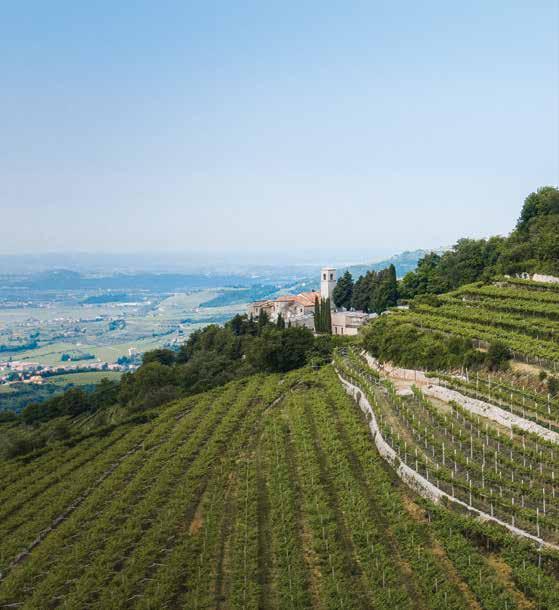

Corvina, Corvinone, Rondinella, Molinara
With a total production of less than 3000 bottles, this could easily pass for an estate’s reserve wine. This picture-postcard vintage has produced a beautifully-etched but very backward Ripasso. Aged for 6 months in 2nd and 3rd fill French barrique then 6 months in 2000L Garbellotto botte this shows a gorgeous nose of red cherry, tinned strawberry, blackberry, with allspice and clove from oak. The palate is surprisingly light driven by lemony acidity with exotic notes of Turkish Delight, plum, damson, and wild rose. Fine tannins from oak and grape support the fruit and drive the elegant finish. This needs time to unfurl. 2026-2030 – mp

Nestled in the heights of Valpolicella Classico lies Monte Castelon, where winemaker Silvano Tommasi defies convention. At 400m above sea level, the estate benefits from a unique climate, fostering grapes of vibrant acidity and intense flavor. Silvano's commitment to tradition shines through in his meticulous vineyard practices and hands-on approach, resulting in captivating wines that capture the essence of highaltitude Valpolicella.

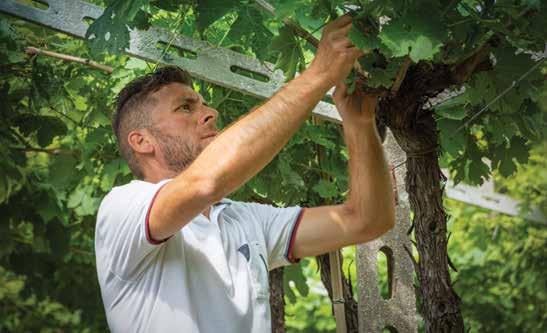
No one would describe 2022 as an easy vintage but the combination of a very wet winter followed by a roasting summer have leant these wines an immediate charm that makes them appealing even at this young stage. There is a burst of red cherry, cherry compote, red plum and cranberry on the nose. The acidity is remarkably fresh given the weather in 2022 –obviously the high altitude and attention to managing the canopy has paid dividends. Tannins are present but not overpowering and nicely balanced by the fruit’s crunchy texture and the vibrant acidity. Although the acidity lends itself to serving this slightly chilled, the fruit is vibrant and never bitter with cranberry, red currant and cherry. 2024-2027– mp
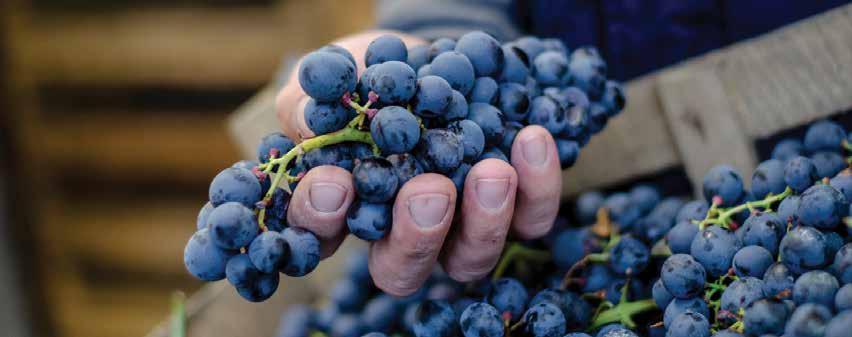
RIPASSO AND AMARONETHE STARS OF VALPOLICELLA
5006

DELLA VALPOLICELLA CLASSICO DOCG, MONTE CASTELON, 2019
Corvina, Corvinone, Rondinella, Molinara
$ 56 $ 336
This is an exceptional example of Amarone with a colossal level of extract and layers of complexity including wild rose, hawthorn, wild strawberry, bramble, cooked plum, incense, raspberry jam, cinnamon, liquorice, fig, and black cherry. The balance in this wine is astonishing with the alcohol never taking centre stage and rather providing a lovely backdrop for the huge amount of concentration. Acidity and tannins are also high but – again – they just help float the fruit along to a seemingly endless finish. This is a real tour de force but nowhere near ready to drink. 2027–2032– mp
Thr ow away your misconceptions of Valpolicella. Emerging from behind the beefy bravado that many Amarone and Ripasso examples throw about is another style that is equally tantalising.

At Monte Castelon, winemaker Silvano Tommasi seeks to craft wines that are elegant and super sleek, wines that are an object lesson in balance and that offer connoisseurs an intriguing break from convention. The climate probably helps. The family estate, in northern Valpolicella Classico, is 400m above sea level, benefiting from a useful diurnal temperature swing that acts as a buffer against the risk of over-ripe fruit. Then there Silvano’s choice of trellising. Vertical shoot positioning (VSP) is out, and old-school pergolas are in. His decision mirrors a regional trend away from VSP, the once-touted benefits of this orderly (and easily mechanised) system are increasingly less attractive against the shading and ventilation that pergola offers. Across Valpolicella, temperature increases are a concern, but Monte Castelon has it in hand. ‘We want to make the maximum expression of high-altitude Valpolicella’, Silvano asserts. We think he is onto something. It is difficult to imagine now, but most of the property was planted with cherry trees until relatively recently. Their father, Bruno, was the first to plant vines, initially selling to the local coop. As it turned out he hit on a very good thing, because in 2015, the Domini Veneti coop won a Tre Bicchieri using grapes from their vineyard. This prompted a family rethink, and a compelling vision for Valpolicella that is as graceful as it is commanding. The first bottles were released in 2018.
Both Silvano and his brother Maurizio are sticklers for local traditions. Their Veronese pergolas are positioned on small terraces, held in place by dry stone walls known as ‘marogne’, which are as picturesque as they are labor-intensive. For the uninitiated, Veronese pergolas, when populated with vines, result in a canopy that resembles a low ceiling – one that is impossible to work with machine. But the quality of the fruit makes this practice essential, as does organic farming. The soils are limestone over an ancient volcanic base, which retain water and feed it back to the vines during periods of low rainfall. This combination of environmental factors and shrewd viticultural decision-making develops grapes with vibrant acidity which Silvano exploits to great effect in the structure of his final wines.
Production of both Amarone and Ripasso (made from macerating Amarone pomace with Valpolicella during a second ferment) involves the drying of grapes to concentrate flavours. No fewer than 3kg of grapes are required to produce a single bottle of Amarone. The majority of estates now employ climate-controlled drying rooms ( fruttaio ) for the task, although Silvano, ever the traditionalist, prefers to dry his grapes naturally through the winter. It is not without risk, as there is more chance of rot, but he insists it makes a big difference: ‘The slower the drying process, the greater the retention of aromatic complexity,’ he explains. If ever he deviates from tradition, it is with the import of second and third-fill French barriques for the maturation of his Ripasso, which are, he says, ‘important to the development of fine tannins, such is their intrinsic quality’. In support of authenticity, he also uses 2000L Garbellotto botti (and exclusively so for the Amarone). Silvano has made a big splash with his finely-tuned 12,000bottle operation – these are wines to buy, to cellar, and to enjoy.
5038
The Scriani winery is located in Fumane. This reputed vineyard valley lies within the Valpolicella Classico subzone, the most historic and highly revered production area for the region. Azienda Agricola Scriani is a family-run estate.
5039
Corvina, Corvinone, Rondinella, Molinara, Oseleta

An absolutely classic style of Valpolicella for its fragrance, freshness, and easy drinkability. Pleasing aromas of ripe red fruit and cut flowers are lifted by minty nuances on the nose. The palate features bright, crunchy red fruit and earthy undertones. Medium bodied, dry, and well balanced with subtle tannic grip. Serve slightly chilled. 2024-2027–jb

Ripasso is a unique winemaking technique used in Valpolicella, whereby a portion of dried grape pomace left over from the Amarone fermentation, is added to recently vinified Valpolicella, causing the mixture to referment. This technique brings greater concentration, richness, and flavour intensity. The 2021 vintage from Scriani is fleshy and bold, with intense baked fruit and spiced flavours, structured tannins, and a pleasantly warming finish. 2024-2028 –jb

Stefano Cottini and his team pride themselves on their traditional range of wines, from easy-drinking Valpolicella Classico, to richer Ripasso, ageworthy Amarone wines, and lusciously sweet Recioto.

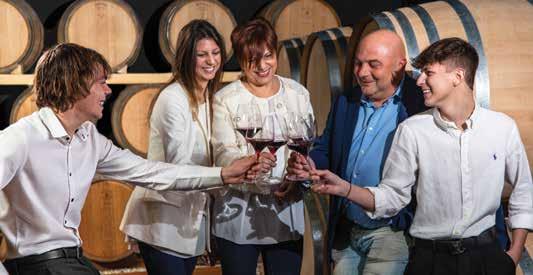
5040
SCRIANI MADDALENA RECIOTO DELLA VALPOLICELLA CLASSICO DOCG, 2021 (WOOD CASE)
Corvina, Corvinone, Rondinella, Molinara

Recioto is an ancient, winemaking style from Valpolicella. The grapes are dried in special lofts after harvest, causing them to desiccate thus concentrating their flavours and sugar content. These dessert wines are rich, concentrated, and lusciously sweet. Scriani has crafted a lovely 2021 vintage with vibrant dark fruit interlaced with dried floral notes and layers of spice. The palate is remarkably fresh and fine grained despite its tempting sweetness. Drinking well now. 2024-2027–jb
5041
Corvina, Corvinone, Rondinella

The iconic Amarone wine style emerged in the 1950s, when local producers experimented with a longer fermenting period for their raisined, Recioto-bound grapes. The resultant dry wine style was dubbed Amarone, in reference to its drier, more bitter character. Amarone wines are unabashedly BIG. The 2021 vintage from Scriani is no exception with its rich, ultra ripe dark fruit, its dense, velvety palate structure, and warming finish. 2024-2034 –jb
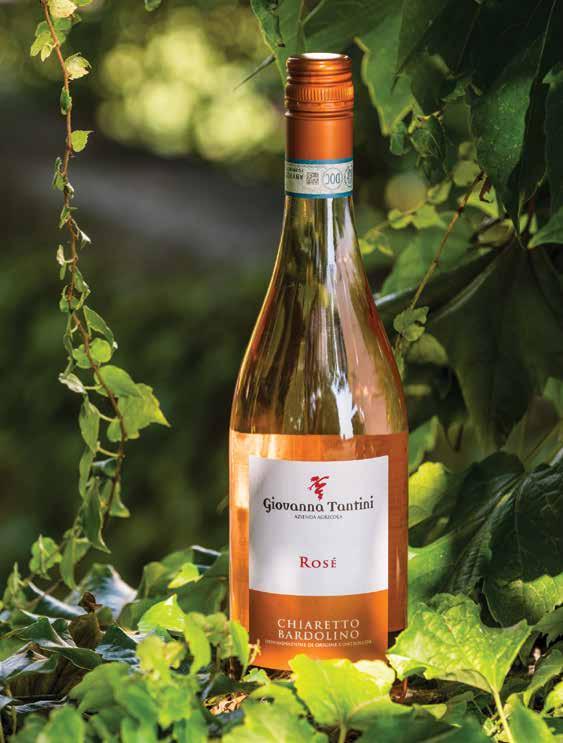
The Tantini estate overlooks Lake Garda, in the province of Verona. The family’s 11.5 hectares of vineyards stretch across rolling hills of
5007 GIOVANNA TANTINI BARDOLINO CHIARETTO, DOC, 2023
Corvina, Rondinella, Molinara

As a summer sipper before dinner Bardolino Chiaretto is the name for the light, dry rosé wines produced on the shores of Lake Garda. Giovanna Tantini produces Chiaretto in a crisp, clean, unoaked style with lots of bright, primary red fruit. This is a simple, quaffing rosé for everyday consumption. 2024 –jb
Castelnuovo del Garda and Sona. The soils in Bardolino are extremely diverse, owing to deposits left by the glaciers that shaped the Garda basin. This diversity allows Tantini to produce an array of light white wines, rosé, and vivid dry reds.
5008
GIOVANNA TANTINI PINOT GRIGIO, DELLE VENEZIE DOC, 2023
Pinot Grigio

A light, unoaked Pinot Grigio with citrus aromas and hints of candied pear. The palate is taut and dry, with piercing high acid, citrussy flavours and discreet minerality. Refreshing grapefruit bitters linger on the finish. This is a straightforward, everyday aperitif white wine. 2024-2026 –jb
5009 GIOVANNA TANTINI BARDOLINO, DOC, 2022
Corvina, Rondinella

12.5%
A classic blend of Veneto red grapes, Corvina, Rondinella, and Molinara yielding a very distinctive result. The nose is incredibly vibrant, with tangy red fruit, citrus, and balsamic notes. On the palate, a combination of tangy acidity, subtly chalky texture, vivid fruit, and savoury nuances make for a hugely refreshing red. Ideal for light red wine lovers looking to step off the beaten track. 2024-2027–jb
5010 ETTORE, IGT ROSSO VERONESE, VENETO, 2017
Corvina, Merlot
The 2017 vintage of Giovanna Tantini’s “Ettore” cuvée is at its peak right now. Intense baked fruit and floral aromas mingle with tertiary nutty undertones on the nose. The palate is very harmonious, with its plush, velvety texture, its mellow tannins, and rounded structure. Savoury herbal hints give a refreshing lift to the long finish. 2024-2030 –jb
Pomegranate, blood orange, strawberry, hints of balsamic vinegar
Raspberry, pomegranate, apple, savoury herbs
Tagliatelle with wine and lemon-butter sauce 12.5%
Vegetarian pizza with tomato sauce


Baked cherry, balsamic hints, savoury herbs
Beef-veal-pork ravioli in marinara sauce

Born in 1995 as a four-way partnership to restore an old farmhouse with focus on Vedicchio grape, the venture was acquired by Togni family in 2005 and expanded its focus to a greater range of wines. The winery is now run independently by Paolo Togni since 2018, to better focus on what the lands of Le Marche have to say.

A bit hazy, tank sample).
The much respected grape of Marche. A light lemon hue appearance. The nose has mediumintensity aromas of bread/ dough, savory notes, chives, bouillon, oatmeal, grapefruit pith and peel and a slight acridity, like avocado milk. It is dry on the palate and has a medium-sized frameacidity, extract, texture and body, and nice length and fruit with savory/ bouillony components and flavors of chives, grapefruit peel/pith and avocado milk, with a medium, leesy finish. 2024-2026 – ir
Savory/bouillony, chives, grapefruit peel and pith, avocado milk [3.00]

The local variety on its way to a greater recognition. The wine shows a gray, pale platinum color and medium intensity, lifted aromas of pear drop, drying Anjou pear and wild flowers. Dry, with a medium acidity, a medium extract, a soft texture and a medium body, the palate shows nice length and persistence of pear drop, drying pear, honey, wild flowers and grapefruit pith, with a lift, moving on to a medium finish. 2024-2025 –ir

A highly aromatic red grape, with a thin, easyto-break skin that nearly disappeared because of this, but now is making a comeback. A deep purple, opaque robe. The nose is of a medium intensity packed with unusual for a red wine aromas - peonies, honeysuckle and jasmine, then black plum reduction, rubbed leaf and toffee. It has a medium-minus acidity, is dry, and on a lighter, medium-minus side: extract, fine loose-textured tannins and body, but with a lovely length and an exotic fruit that follows the noselilac/peonies, honeysuckle/ jasmine, again black plum reduction, black tea, rubbed leaf and toffee, closing with medium-plus finish. 2024-2025 –ir
and
Lilac/peonies, honeysuckle/jasmine, black plum reduction, black tea, rubbed leaf, toffee
Charcuterie and medium-aged cheeses
Prosecco is an Italian sparkling wine made in the country’s northeastern regions. With its soft bubbles, bright fruit, and easy-drinking charm, Prosecco is a definite crowd pleaser. It is also a highly affordable choice for everyday celebrations.


The Difference between Prosecco DOC & Prosecco Superiore DOCG
Prosecco is made from the native Italian grape, Glera – which gives bright acidity and a subtle peachy, floral perfume. There are two tiers of Prosecco wines, the vast Prosecco DOC, produced from large swathes of gently undulating vineyards across the Veneto and neighbouring Friuli Venezia Giulia. These wines have subtle, slightly candied orchard and stone fruit aromas, light body, and frothy effervescence.
While Prosecco DOC has historically always been white, a new Prosecco Rosé category was created as of the 2019 harvest. These wines are made from Glera blended with 10% to 15% Pinot Noir, to create a fuller bodied, pale pink bubbly with attractive red berry notes alongside Prosecco’s classic flavours.
Prosecco Superiore DOCG is reserved for the best Prosecco wines. These superior sparkling wines have finer bubbles, greater freshness, and more persistent flavours. Their fruity aromas are often heightened by hints of white flowers, aniseed, ginger, or hazelnut.
Prosecco Superiore hails from just two, unique hillside locations in the Treviso province of the Veneto: Asolo and Conegliano Valdobbiadene. The latter is the historic heart of Prosecco winemaking. These hilly areas have a cool, yet sunny climate allowing the grapes to ripen more slowly, developing greater aromatic complexity, while preserving high natural acidity.
The Signature Style of Prosecco
If you taste a glass of Prosecco alongside Crémant, Cava, or
Champagne, you will notice that the bubbles feel different on your palate. This is due to Prosecco’s distinctive winemaking process called the Charmat or Martinotti method. Prosecco’s secondary fermentation – where the bubbles are formed – takes place in large, pressurized tanks instead of in bottles.
Carbon dioxide, which is given off by fermentation, gets trapped in these sealed vessels and dissolves into the wine forming bubbles. Once the wine is rendered sparkling, it is rapidly bottled. The idea is to keep the wine very fresh, fruity, light in body, softly sparkling, and lower in alcohol – most Prosecco is 11 to 11.5% alcohol.
Prosecco ranges from very dry to subtly sweet. The sweetness level is written on the label. The words Extra-Brut or Brut are used for bone dry to dry Prosecco, Extra-dry (confusingly) means that the wine has a hint of fruity sweetness, and finally Dry refers to semi-sweet Proseccos.
With its balanced acidity, rounded fruity palate, and subtle fizz, Prosecco wines pair with a wide variety of dishes. The best matches are made when the wine’s sweetness compliments the food. Drier styles will off-set salty, greasy meals nicely, as well as matching light fare. Sweeter styles temper subtly spiced flavours or, for a like-for-like pairing, try a fruity, not overly sweet dessert.
Drier styles (Extra-Brut & Brut): Antipasti platters of cured meats and marinated vegetables, fish & chips, sushi.
Sweeter styles (Extra-dry & Dry): Lightly spiced Asian dishes like Pad Thai, fruit salad, pavlova with peach compote.
The Italian sparkling wine Prosecco hails from northeastern Italy – more specifically the Veneto and neighbouring Friuli Venezia Giulia. The main Prosecco grape is the native Italian Glera, which
gives bright acidity and a subtle peachy, floral perfume. Prosecco is not a traditional method sparkling wine, like Champagne. Instead, its effervescence is derived from the Charmat method;
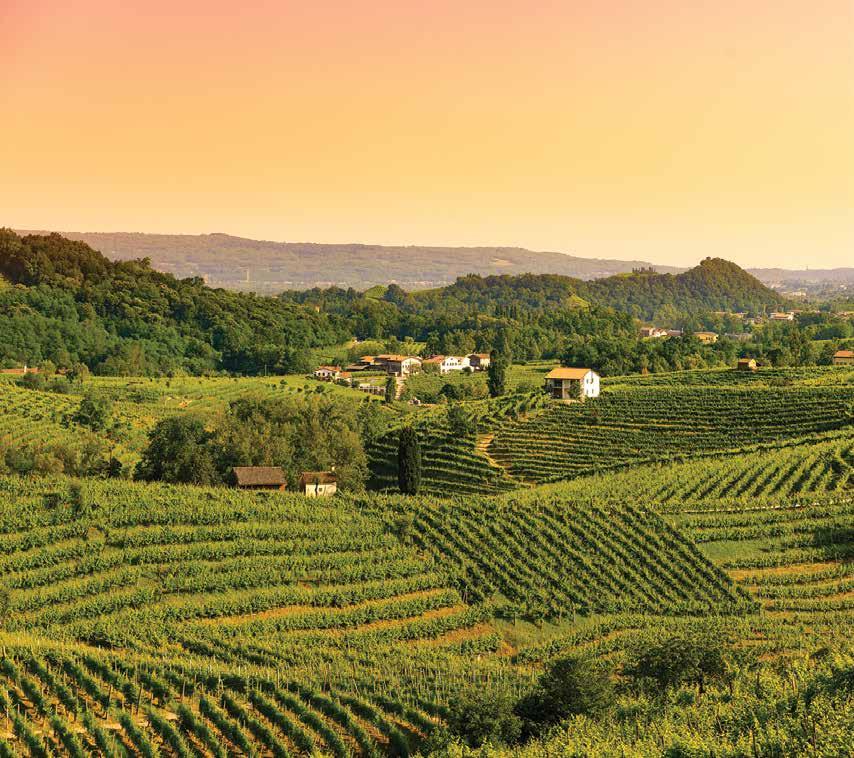
a secondary fermentation in sealed tanks. The resultant bubbles are far softer and frothier. The best Prosecco wines are made in two hilly DOCG appellations in the Treviso province of the Veneto. These Superiore wines have a finer, more elegant character.
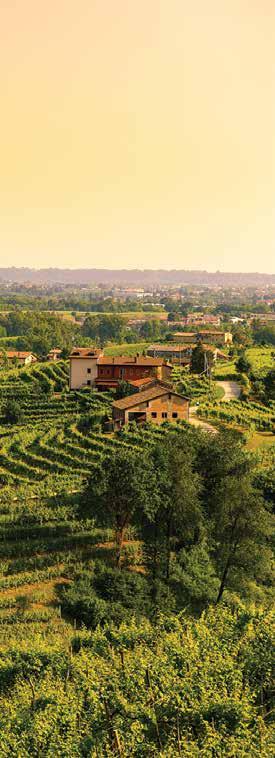

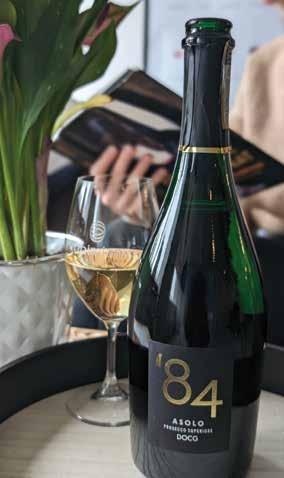
The Colli Asolani is a hilly area of northern central Veneto. Asolo is one of just two premium tier Prosecco Superiore DOCG appellations. The slope slide plantings of Glera here give a refined, mineral-laced style. The ’84 cuvée features attractive citrus and green fruit aromas. Sleek, creamy bubbles give the palate a very smooth mouthfeel. Elegant and soft, with lots of freshness. 2024-2025 –jb
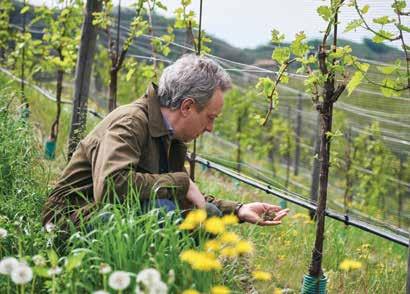
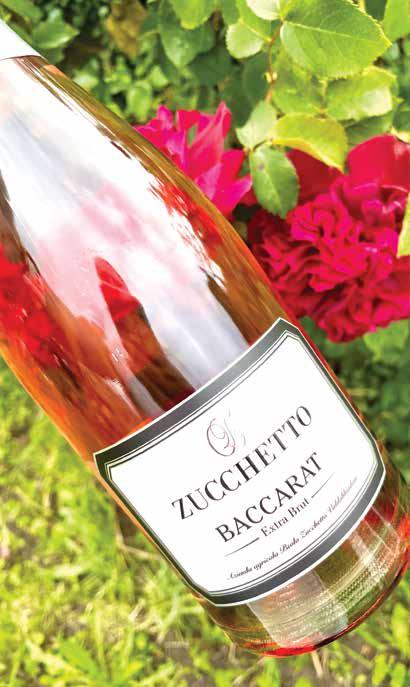
5012
ZUCCHETTO VALDOBBIADENE, EXTRA DRY, PROSECCO SUPERIORE, DOCG, 2023
Conegliano-Valdobbiadene is the other top tier, DOCG “Prosecco Superiore” appellation. This recent bottling from Zucchetto is produced in the extra dry style; a term (confusingly) used for subtly off-dry wines. This youthful cuvée is fruit-forward and rounded, with ample proportions, and refreshing citrussy notes on the finish. Drinking well now. 2024-2025 –jb
11.5%
Candied lemon, pear drop, chamomile
Peach, guava, pink grapefruit, biscuity hints [8.27]
Citrus salad with burrata with candied pistachios

Glera 12%
5013

ZUCCHETTO BACCARAT, EXTRA BRUT, ROSATO PROSECCO, TREVISO DOC 2023
Glera, Pinot Nero
Prosecco Rosé is a blend of Glera with 10% to 15% Pinot Nero (aka Pinot Noir). This small additional of red wine brings a pretty pale pink hue, subtle red berry aromas, and a slightly fuller bodied expression. Zucchetto’s “Baccarat” cuvée is made in a bone-dry, Extra brut style. This is a crisp, fruity rosé with vibrant bubbles and lots of lift on the palate. 2024-2025 –jb
Grilled oysters with lemon
ZUCCHETTO VALDOBBIADENE, EXTRA DRY, PROSECCO SUPERIORE/ ZUCCHETTO BACCARAT, EXTRA BRUT, ROSATO PROSECCO TREVISO CASE: 3 BOTTLES EACH
$ 29 $ 174
This Zucchetto mixed case features traditional and modern types of Prosecco. The classic Extra Dry cuvée is fruity and rounded with balanced sweetness. The rosé, a brand-new Prosecco style produced with a splash of Pinot Noir, is crisp and tangy.
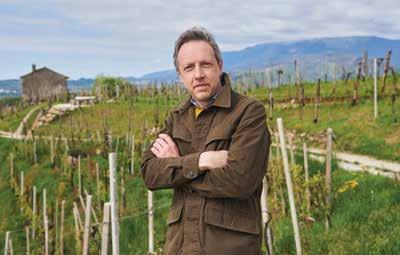

TASTE THE WINES THAT HELP PUT THE PROSECCO DOC ON THE MAP
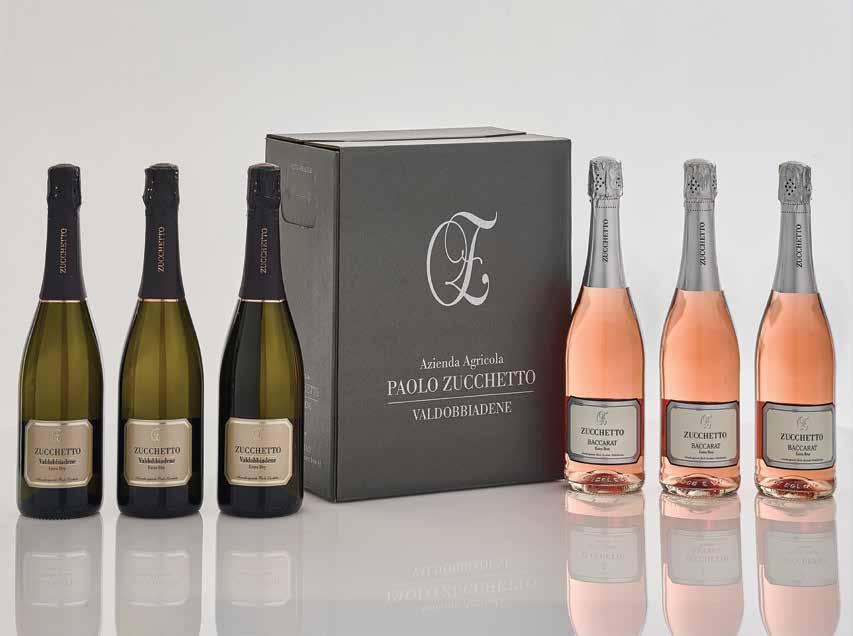
In the far northeast corner of Italy, bordered by Austria and Slovenia, lies Friuli-Venezia Giulia. This is a land of contrasts. Growing conditions vary significantly from the mountainous, alpine north to the Adriatic coast in the south. Vibrant, focused white wines are the region’s major focus, from a wealth of international and indigenous varieties, though deliciously tangy red wines are also made here.
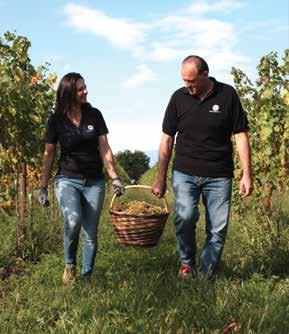
RONCO MARGHERITA CABERNET SAUVIGNON, FRIULI COLLI ORIENTALI DOC 2019
Cabernet Sauvignon 5043
RONCO MARGHERITA REFOSCO DAL PEDUNCOLO ROSSO, FRIULI COLLI ORIENTALI DOC 2021
RONCO MARGHERITA TENUTA COL COLÀT OVALIS, VENEZIAGIULIA IGT 2019
The Tenuta Col Colàt Olvalis cuvée is a blend of Merlot, Cabernet Sauvignon, and Refosco. This is a big, yet quite well balanced wine. Intense baked and raisined dark fruit is lifted by aromatic herbal nuances. Brisk acidity tempers the weighty, fleshy palate and powerful tannins. Finishes dry, with lingering oaked nuances of spice and cedar. Overt, ripe, and gently warming – best served slightly chilled. 2024-2032 –jb 5042
Merlot, Cabernet Franc, Refosco dal Peduncolo Rosso

A firm, full-bodied Cabernet Sauvignon lifted by juicy flavours and lively acidity. Notes of cedar and dark chocolate underscore the tangy dark fruit nicely on the nose. The palate has a pleasantly grippy quality with layers of tangy fruit, dried herbs, and mixed spice. Well balanced and quite complex for the price. 2024-2030 –jb

Refosco dal Peduncolo Rosso is a native Friulian grape that dates back to Roman Times. The name translates literally as Refosco of the red stem, referring to the stem’s red coloration at harvest. Refosco makes bold red wines with zippy acidity, equally marked tannins, and a meaty savoury undertone to their dark fruit, herbal aromatic range. The Ronco Margherita 2021 is very much in this vein, with fragrant aromas and flavours, and a lacquer of oak spice. Best paired with hearty fare. 2024-2029–jb

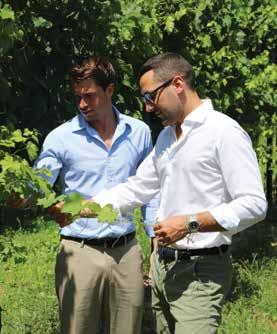
5028
SALARIIS CABERNET
SAUVIGNON, FRIULI DOC 2023
Cabernet Sauvignon

The Salariis 2023 vintage Cabernet Sauvignon offers equal helpings of bright, crunchy red fruit and brooding darker fruit undertones. Earthy, brambly notes add interest on the nose. The refreshing palate is dense and quite tannic at present. Needs time to unwind or a bold, protein-rich food pairing. 2024-2027–jb
This is a perfect introductory mixed case to the white wines of Friuli-Venezia Giulia. It features single variety wines from the region’s signature white grapes: Ribolla Gialla, Pinot Grigio, and Fruilano. All are crafted in an early drinking, unoaked style for immediate enjoyment.



SALARIIS FRIULANO, FRIULI DOC 2023
Friulano is Friuli's most cherished native grape. The name essentially means “of Friuli”. The variety was long known as Tocai Friulano until 2005, when the producers of sweet, Hungarian Tokaj won a legal claim to the name. Friulano-based wines are elegant and lithe, with pure fruit flavours, and hints of minerality. The Salariis 2023 vintage is defined by its piercing acidity, its citrussy, mineral, subtly nutty flavours, and taut structure. 2024-2026 –jb
SALARIIS RIBOLLA GIALLA, VENEZIA GIULIA IGT 2023 Ribolla Gialla
The Ribolla Gialla grape is a bit of a chameleon. It can range from light and floral, to deeper, more concentrated styles, sometimes aged in oak. Ribolla is also an excellent variety for sparkling winemaking. The Salariis cuvée is firmly in the first category, brimming with vivid yellow fruit and floral tones, lifted by crisp acidity. Lean, long, and silky smooth; a guaranteed crowd pleaser. 2024-2027–jb
Pinot Grigio
In the relatively cool, sunny Friuli appellation, Pinot Grigio takes on a nervy quality that brings a lot of interest to a grape that (let’s face it) can sometimes be quite boring. High toned notes of citrus, just ripe mango, and peppery spice are nicely pitched against bracing acidity. A broad, medium bodied palate makes a nice counterpoint to these lip-smacking flavours. Drink now. 2024-2027–jb

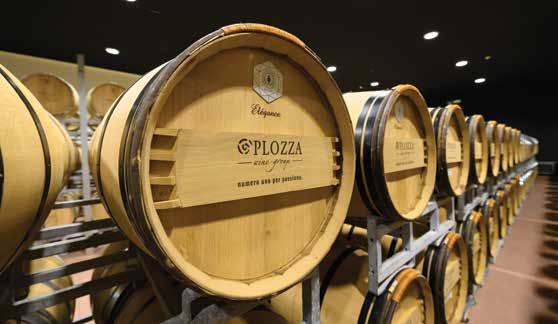
Valtellina is a valley in the north of the Lombardy region, right in the center of Northern Italy. It is probably the best known outpost of Nebbiolo outside of Piedmont, known here as Chiavennasca. Grown on steep slopes and in alpine climate, it results in lighter reds, if still with the typical tannic backbone. Nebbiolo is bottled alone or with a drop of other local grapes, as Rosso, Superiore, sometimes with a village name, as well as, if made from dried grapes, an Amarone-style Sforzato.

A 100% Nebbiolo, aged for 36 months in chestnut casks. A deep ruby robe. The nose offers medium-intensity aromas of honey cake, red floral notes, leather, marzipan, cherry and cherry pit, with pomegranate arils and skin appearing with air. It is dry, with a medium acidity, a medium-plus extract, medium mediumtextured tannins, a mediumplus body and nice length and persistence of mint, red flowers, leather, sour cherry and pit and white woody spice - cardamom, and a medium finish. 2024-2028 – ir
Parmigiano-Reggiano

All Nebbiolo, aged for 48 months in chestnut, and named after the cask number it was aged in. The wine shows a deep ruby core with a garnet rim and a mediumplus intensity elements of honey cake, dried rosehip/ tea, dried sour cherry and pit, marzipan, tar and camphor. The palate is dry and has a medium-minus acidity, a medium-plus extract, medium-plus fine squeakytextured tannins, a mediumplus body and lovely length and persistence of rosehip tea, honey cake, dried sour cherry, tar and camphor/ mint, ending with a mediumplus finish. 2024-2028 – ir
Piedmontese pasta tajarin with white
Pietro Plozza, who gave the winery its name, made his first Sforzato wine in 1946. The winery was acquired in 1973 by a Swiss company with Zanolari family at the helm. Today, known as Plozza Vini Tirano, the Lombardy winery is a part of a larger Plozza Wine Group that also has dedicated teams in other important areas, such as Franciacorta. That allows each of them to focus on perfecting their own region’s expressions.

5047 SFORZATO BLACKEDITION, SFORZATO DI VALTELLINA SUPERIORE DOCG, 2018
Nebbiolo
$ 72 $ 432
A hypothetical cross of Amarone and Barbaresco – 100% Nebbiolo, made from the grapes that were dried for 3 months, then aged for 32 months in wood. A deep ruby garnet hue. The nose leads with a medium-plus intensity, pretty bouquet of cream, honey cake, red plum, dried rosehip, dried black cherry, ripe sweet watermelon, complicated by hints of dried oregano/sage, hay and leather with some air. The dry palate follows with a medium acidity and a medium-plus structure: extract, fine-textured tannins, body, with a coating creamy mouthfeel, and nice length and fruit featuring red plum, dried rosehip, dried cherries, dried oregano, toffee and plum pudding with a tarry and peaty note and a long camphor/mint inflected finish. A contemplative wine. 2024-2032– ir
6.5%
Cream, honey cake, red plum, dried rosehip, dried black cherry, ripe sweet watermelon, dried oregano/sage, hay and leather
Red plum, dried rosehip, dried cherries, dried oregano, toffee, plum pudding, tar, peat, camphor/mint
A thoughtful wild mushroom risotto
$ 69 $ 207
Dried rosehip, peat/wool, char, grilled Portobello mushroom, dried black and sour cherries, pomegranate reduction Cream, dried rosehip, black and sour cherry, pomegranate reduction, Portobello mushroom, aloe, a hint of char
Braised venison ribs with balsamic and porcini mushrooms
All Nebbiolo, this is a 50/50 blend of fresh grapes and bunches dried for three months. It has a deep ruby core with a garnet rim. The nose offers a medium intensity, lifted aromatic range of dried rosehip, peat/wool, char, grilled Portobello mushroom, dried black and sour cherries and pomegranate reduction. On the palate, it is dry, with a medium-minus acidity, a medium-plus extract, medium-plus fine-textured tannins, a medium-plus body, and a lovely length and well-enunciated flavors of cream, dried rosehip, black and sour cherry, pomegranate reduction, Portobello mushroom, aloe, a hint of char, and a medium finish. 2024-2026– ir
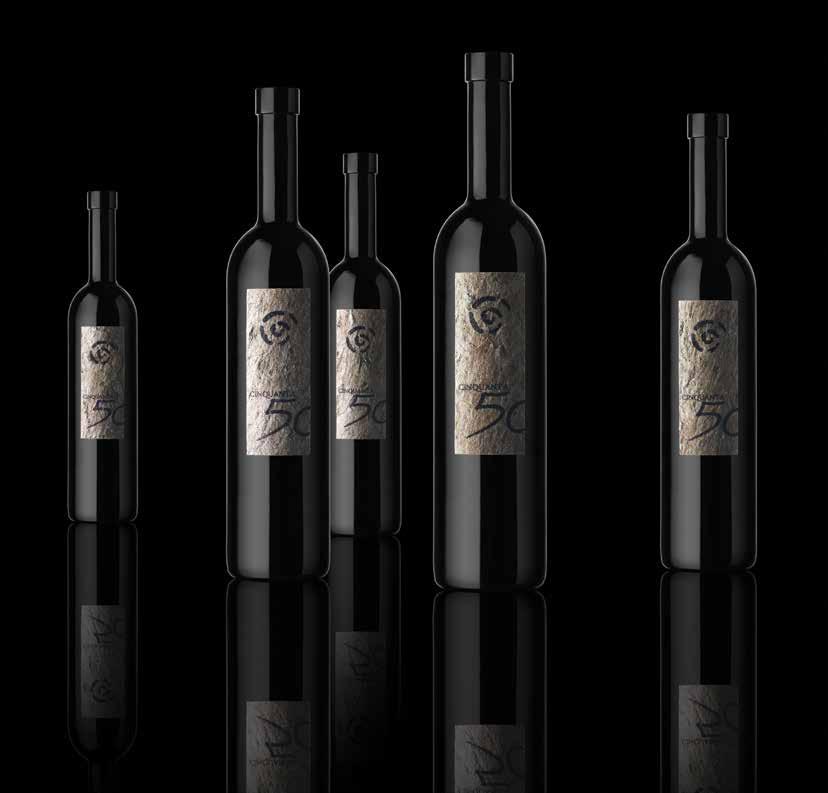

In 2015, three of his wines from the 2013 vintage received a rating of 100 points from The Wine Advocate; thus his nickname, “Mr. 300 points” (Herr 300 Punkte in German). We are pleased to announce that Opimian has secured a small allocation of these outstanding wines from this brilliant winemaker. Don’t miss this opportunity to get your hands on these top-scoring wines, as they usually sell out in record time!
Only at Opimian.ca beginning February 27.
LIMITED TIME – LIMITED QUANTITIES – WEB ONLY







